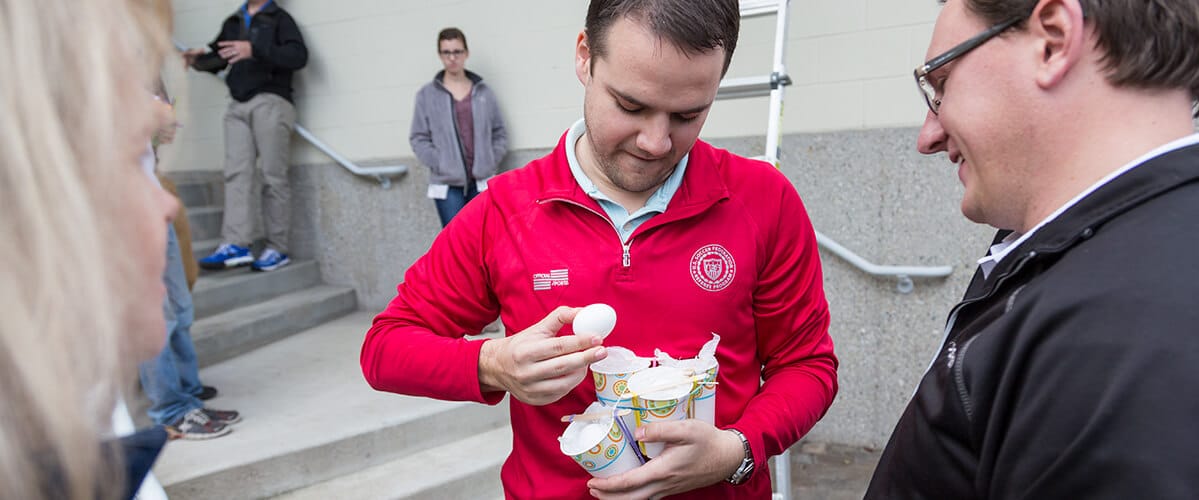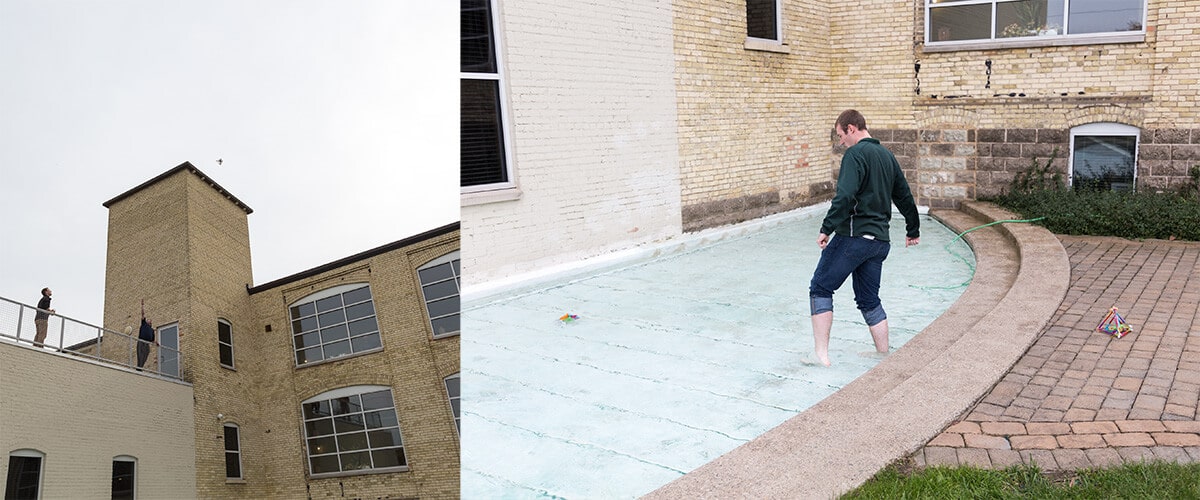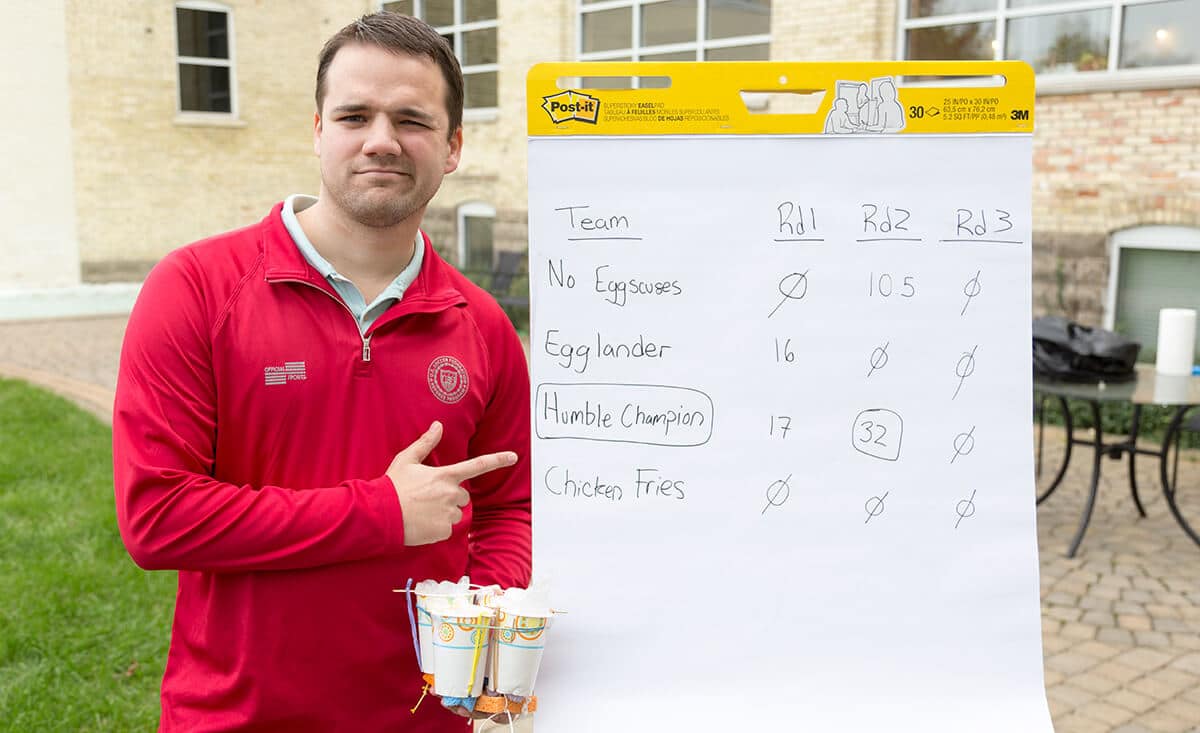
Looking back over my life and career as a 27 year old engineer degreed in product design and manufacturing, one place I never thought I would find myself is here: DISHER Egg Drop Inaugural Grand National Champion, 2016. I won’t say it was historic, but I wouldn’t stop anyone else from making that claim or writing it in textbooks for generations to come. It’s just like the famous saying goes, “To the Victor go the spoils… and to the loser spoiled eggs.”
The design process for creating a winning mechanism started with the rules. As you’re well aware, the rules for each egg drop are different, and this needs to be considered to develop a solid list of functional requirements. This particular egg drop featured some unique rules:
+ Multiple eggs could be dropped at once
+ Maximum size of 8” x 8” x 8”
+ Scoring = (# of eggs) x (height of drop (ft))
+ Score = 0 if ANY of the eggs are broken
+ 3 drops total, high score taken
+ Each team gets access to a total of 12 eggs
+ Eggs need to be easily inserted/removed from carrying mechanism
Due to the scoring method, I chose a 4 egg payload design. This turned out to be a huge advantage on drop day, as the next largest mechanism could only hold 2 eggs. The mechanism consisted of 4 identical chambers (pictured below), each designed to maximize the strength of the egg, and protect its vulnerabilities.

Inside of a paper cup, a bottom lining of foam was shaped to hold the pointed end of the egg. In a drop scenario, it’s critical that this end impacts first, as the egg will act like an inverted arch, spreading the force of impact down the shell as opposed to pushing the outside of the shell towards the middle of the egg. Please see this Q&A by the University of California, Santa Barbara that supports this claim. The rest of the chamber was then coated with pieces of plastic bag, which kept the egg from contacting the paper cup walls. The egg was held in the chamber by a popsicle stick above the center of the cup, which was in turn strapped on via a rubber band.

On drop day, I decided to make my first drop from a height of 4 feet, 3 inches. This would give me an initial score of 17 total egg-feet. The maximum drop height via ladder was 16 feet, which meant that all the competitor mechanisms would need to get creative and find ways to “drop” from somewhere higher. Kudos to those teams who decided to launch their mechanism from the second story in an attempt to reach levels of egg-drop glory never seen before. Unfortunately this resulted in some spectacularly broken eggs and water trap in the Colonial Clock Building Mote.

In the end, I won the event on a second drop from nearly twice the height, before finding the limit of the VICT-OR-E Mechanism at a height of 16 feet. I would like to thank my family for allowing me to spend countless hours perfecting my craft, my mother for teaching me to never give up on my dreams, and Brent Klein-Horsman for capturing the good side of me in my victory photo.
On a more serious note, thank you to the DISHER team that took the time and effort to put on the event, and to DISHER for providing a space to be rejuvenated at the work place as well as create some funny memories along the way. This event was just a small egg drop in the bucket of great work we get to do on a daily basis.
Yours truly,
Robbie Sullivan
Humble Champion

Written By: Robbie Sullivan – Product Engineer |
Robbie has a B.S. in Product Design & Manufacturing Engineering from Grand Valley State University. Primarily working as a Project Engineer, Robbie has a background using internal engineering systems and tools to complete projects while coordinating with suppliers and customers.
Written By:

Robbie Sullivan
Project Engineer
DISHER Newsletter
Sign up to receive articles and insights, delivered monthly.
Schedule a no-committment project call
Reach out to discuss your project to find out if DISHER could be a good fit for you.
